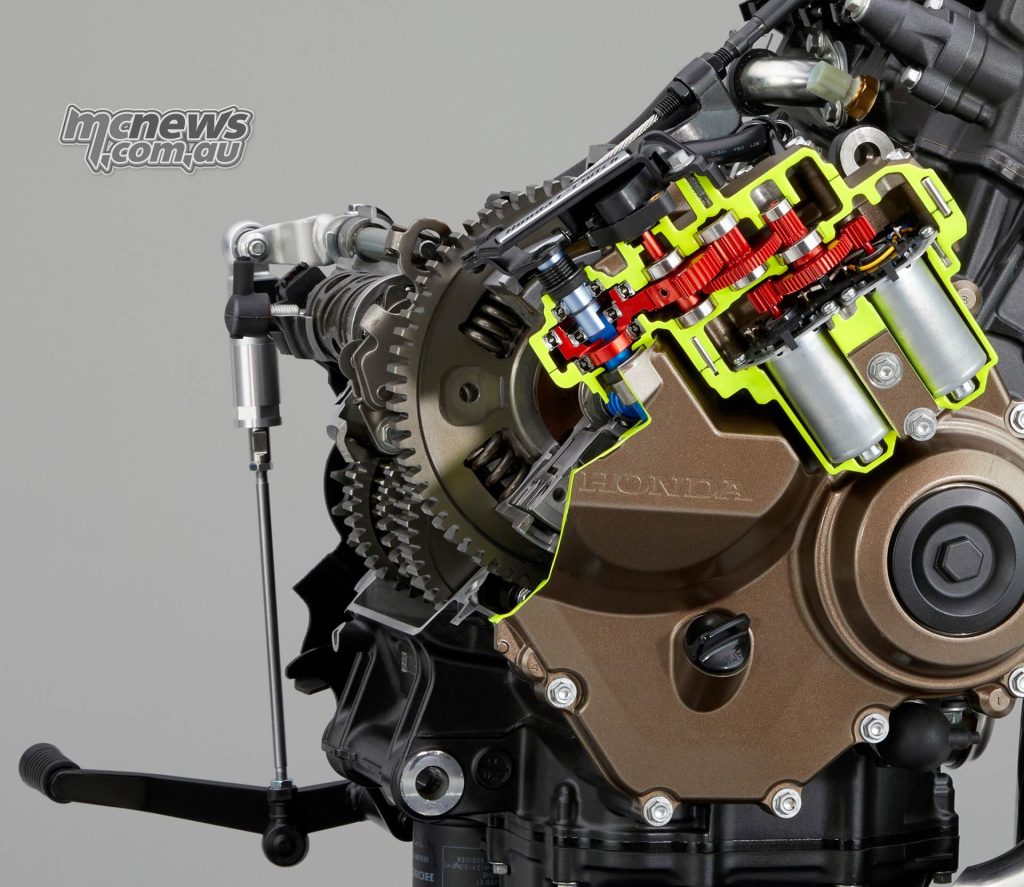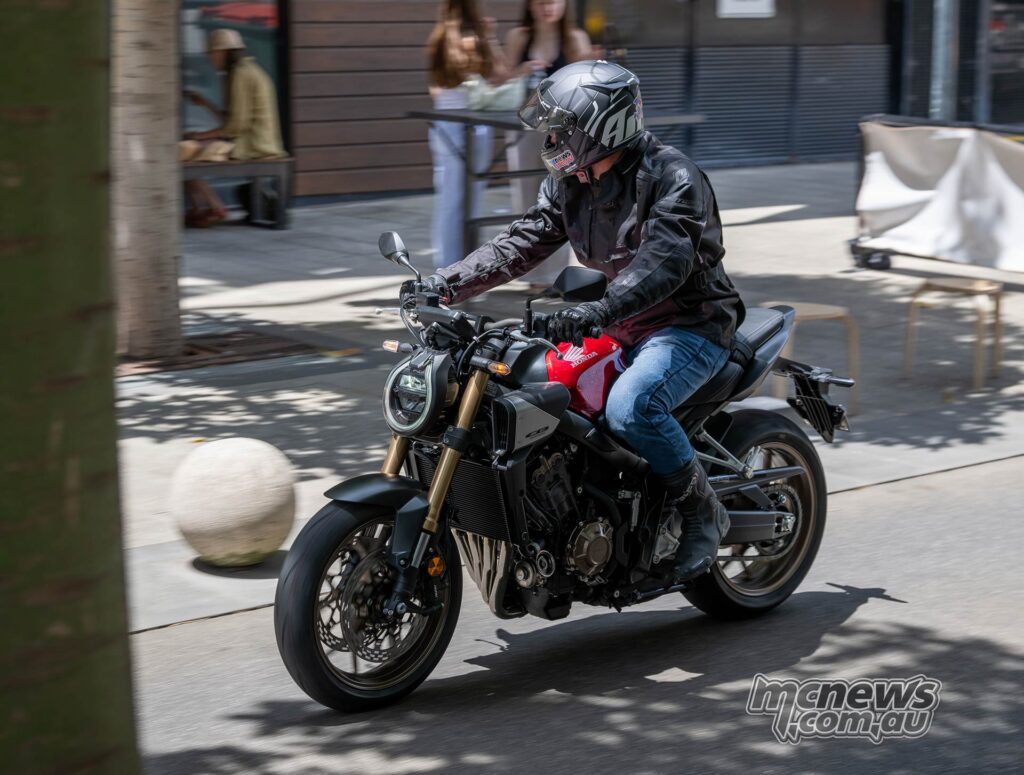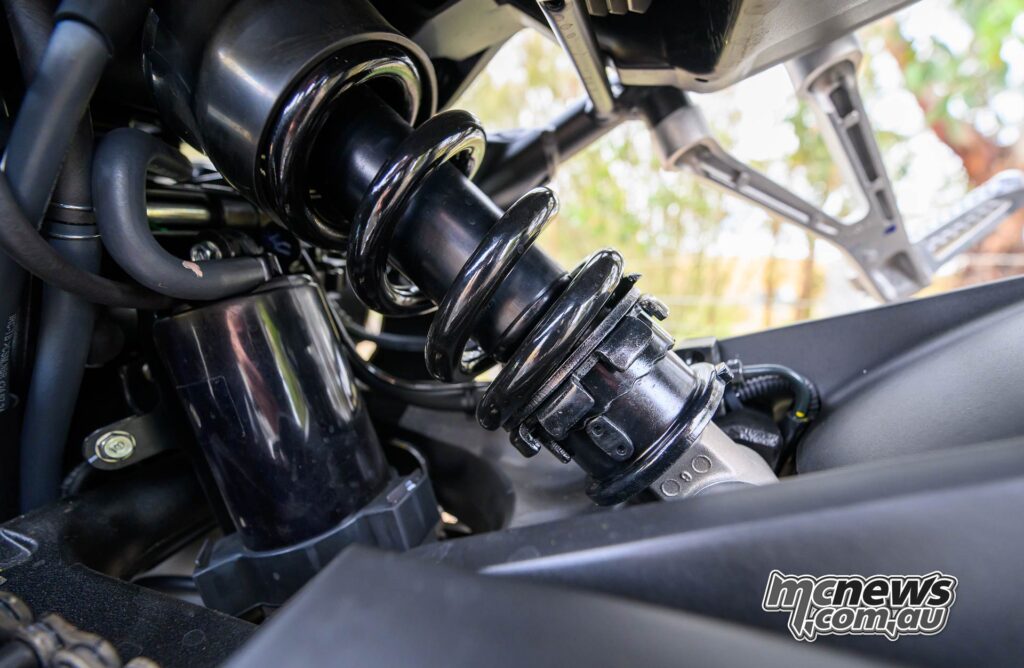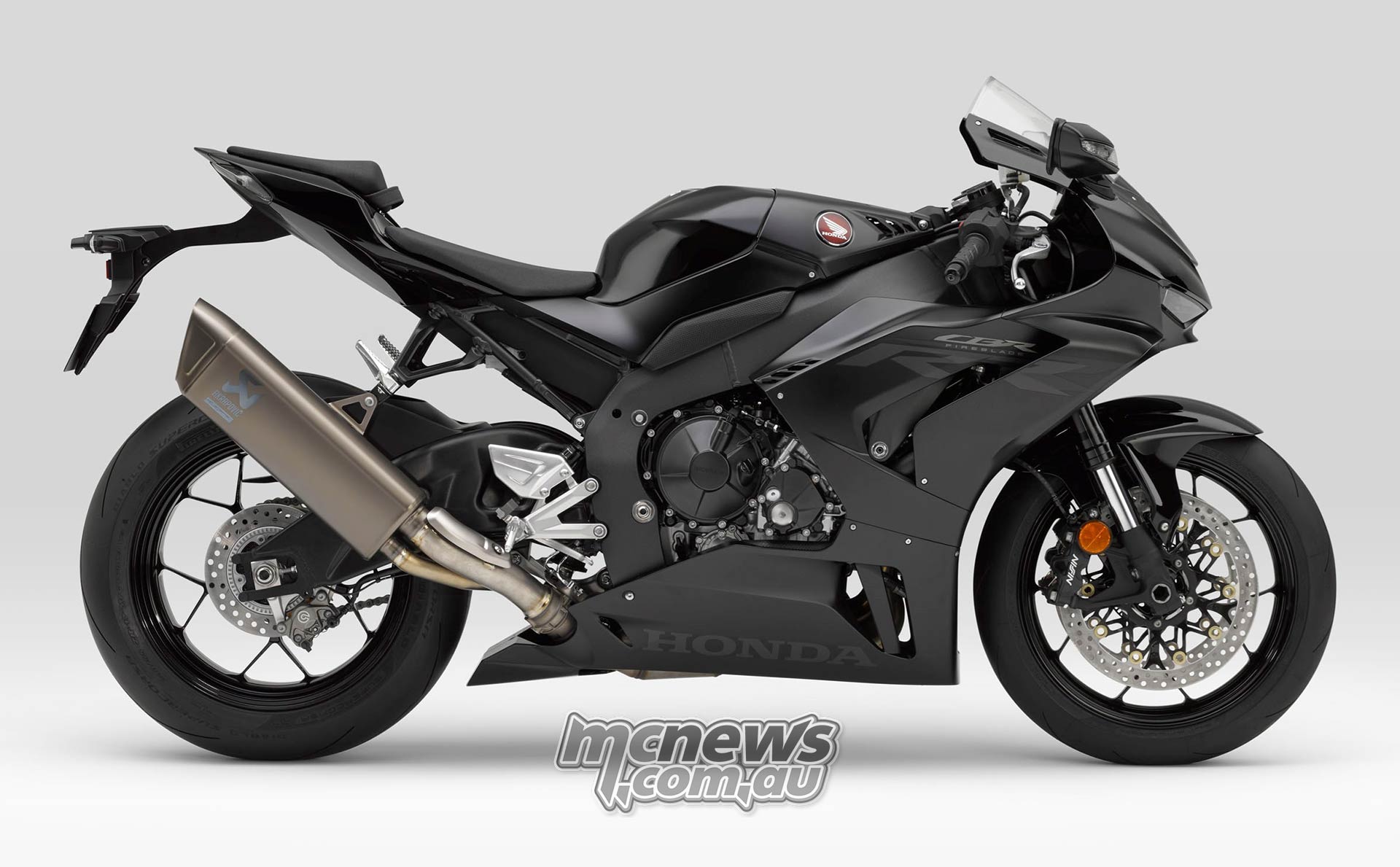Honda CB650R Review
It’s not bad on the peepers eh? Probably not quite as nicely proportioned and muscular as its bigger, older brother the CB1000R that I tested back in 2019, but I think it still comes up pretty nicely.

What we have here is the Honda CB650R, which Honda dubs a ‘Neo-retro’ design – and I think that description hits the mark perfectly. It’s a contemporary interpretation of classic retro styling, and from where I’m standing (or rather, sitting), it’s a look that really works.

Beautifully finished with some great styling details. The LED headlight, those wonderful four-into-one pipes. The quality stitching on the seat, that gloriously deep, glossy, maroon paint on the tank. Even the number plate hanger gets some serious design attention. It really is a stylish little bike. I rate it.

And so after sampling a bevvy of Honda’s lovely little parallel-twin offerings of late, when moving onto the 649cc in-line four-cylinder engine there was a noticeable step up in bottom end shove. While I love the little 500 twins I must admit to audibly uttering ‘this is more like it’ as I eased away for the first time.

Speaking of easing away… we better talk about what is arguably the main story here. The E-Clutch.

What’s an E-Clutch you ask? Well first up. It’s not a DCT. You do get to shift gears with your foot like a regular bike, so it’s not an auto box of any kind. You just don’t need to use the clutch. And while you might think that modern quick-shifters give you that ability – the difference here is that you don’t need to use your clutch ever, if you don’t want to. Even from standstill.

Even more twitch-inducing, until you get used to it; is that you can throw it into first, from neutral, without using the clutch. You might need to picture that in your melon to fully comprehend it: You’ve started the bike up, it’s in neutral, you bang it into first gear without using the clutch and the bike just sits there waiting for you to twist the throttle and go. The first time you do that it feels very, very wrong and goes against every learnt instinct. But you soon get over it.

That’s all pretty impressive, but what I think is truly brilliant about the system is the flexibility it offers. If you prefer, you can still use the clutch the old-fashioned way. The moment you pull the lever, it behaves like a traditional clutch, waiting for you to release it and engage smoothly. Then, after a few seconds, it seamlessly switches back to E-Clutch mode, so you don’t have to engage it again unless you want to. And if you prefer a more hands-on experience, you can turn the system off completely and operate it as a regular clutch.

Shift quality is pretty good too. Especially on up-shift. I found the down-shifts could have been smoother and improved when I did a bit of blipping but they were still more than acceptable. The tech allows you to easily ‘tune’ the shift via the dash between Hard, Medium and Smooth settings for both up and down-shifts.

Now the environment where this shines brightest is during urban riding. It’s an absolute animal from the traffic lights. Anyone who’s ridden a scooter knows how easy and utterly repeatable it is to launch from the lights on a bike that you can dial on full throttle immediately with basically zero skill or effort. As in: Green light, smash the throttle open, snick another gear before you’re even across the intersection. Well the E-Clutch allows you to do just that.

What also works well for it is the grunty bottom end of the in-line four which is the second thing I want to talk about. It’s very, very much tuned for bottom end and lower mid-range. Being a LAMs restricted tune, it’s dialled back to around the 47 hp mark, but being a 650 four it has decent torque.

So what you get is solid torque off the bottom and you make good progress to around 6000 rpm where unfortunately it hits a bit of a wall. It will rev out to the 12 thousand red-line, but that doesn’t feel worth doing as progress is artificially stunted. Shift at six. Use the bottom end. Ignore half the tacho…

I can’t help but wonder what the unrestricted version might be like. It’s a super smooth engine that you can feel is being held back noticeably from mid-range up. The full tune puts out 95 horsepower, so it’s obviously capable. I don’t quite understand why Honda doesn’t bring them in to be honest. Their line-up is missing a mid-sized four-cylinder street bike with that level of power. Which means that if you don’t want a twin (think the Hornet 750), then Honda doesn’t have any option for you. It’s such a shame that we can’t de-restrict LAMS bikes once you’re off your Ps like you can in other countries. Makes no sense to me. Anyhoo.

The new five-inch TFT is nice. When combined with Honda’s ‘Roadsync’ app this lets you take calls and listen to music via bluetooth, as well as getting access to turn by turn nav on screen. While I’m not sure that learners should be taking calls while they’re still figuring out how to ride, the turn-by-turn nav is a great addition.

The CBs ride position is very much neutral and relaxed with a nice low 810 mm seat that has your feet firmly on the ground when at a stand-still. As such it’s perfectly at home around town. Nice and thin between the bar ends to work your way to the front of the traffic light queue with ease. It’s a filtering beast actually.

Up at speed and out on the open road I found the suspension to be on the firm side, the rear shock in particular. A little too much comp and/or spring rate a little heavy perhaps? Road surface changes and everyday bumps came through to the rider more than they ideally should for a bike that’s not a hard core sportsbike and my butt was definitely ready for some relief after each 80-minute commute. It has a fairly firm seat which only accentuates the suspension tune.
I think it has started to just settle in a little after fifteen hundred odd kays on the bike, so that could be a thing. But it’s still definitely on the firm side.

To illustrate the point, I have a short gravel road section before hitting tarmac each morning that is currently pretty badly corrugated. On that section, while keeping the speed down to below 50 (to keep the dust down and keep it nice and clean for the boys at Honda HQ), it was a genuine challenge to maintain a constant throttle and avoid it becoming a series of on-off lurches looking all sorts of amateurish…
Now admittedly that’s an extreme scenario but I’ve never had it quite as dramatic on any other bike I’ve tested. I weigh in at just under 90 kg, so a lighter rider might find the suspension setup to be even more on the firm side. Either way, I’m sure a quick trip to a suspension specialist for some tweaking would have it sorted, but I think for this price point you’d expect not to have to do that.

Be that as it may, they are fine looking things and, for the most part, a nice ride. Thirteen and a half big ones buys you a ticket – make it fourteen or so when you budget for some suspension tuning.

For what it’s worth that older CB1000R I mentioned earlier, was also a lovely looking bike that was only a rear shock tweak away from being a damn good thing. It might run in the family perhaps…
Hits:
– Lovely ‘Neo-Retro’ styling. Very nice.
– Smooth 650 four has solid grunt down low
– That EClutch makes it a traffic light hero
Misses:
– LAMS tune leaves you wondering what happened past 6,000 revs
– Suspension tune will be too firm for some on our rough roads
– Where’s the unrestricted version please Honda?

Honda CB650R Specifications
| 2024 Honda CB650R Specifications (E-Clutch) | |
| Engine | Liquid-cooled 4-stroke 16-valve DOHC inline-4 cylinder |
| Engine Displacement | 649 cc |
| Bore x Stroke | 67 x 46 mm |
| Compression Ratio | 11.6:1 |
| Max. Power Output | 48 hp (35 kW) in LAMS spec |
| Max. Torque | 49 Nm in LAMS spec |
| Oil Capacity | 2.7 L |
| Carburation | PGM-FI electronic fuel injection |
| Clutch Type | MT – Wet multi-plate, A.S. clutch (E-Clutch – Wet multi-plate) |
| Transmission Type | Six-speed |
| Final Drive | Chain |
| Frame | Steel diamond |
| Suspension F | 41 mm Showa Separate Function front Fork Big Piston (SFF-BP) USD forks |
| Suspension R | Monoshock damper with 10 stage adjustable preload, 43.5 mm stroke |
| Wheels | Hollow section five spoke cast aluminium, 17M/C X MT3.50 (F), 17M/C X MT5.50 (R) |
| Tyres F/R | 120/70ZR17 M/C (58W), 180/55ZR17 M/C (73W) |
| ABS System Type | Two channel |
| Brakes Front | 310 mm x 4.5 mm double disc, with four piston caliper |
| Brakes Rear | 240 mm x 5 mm disc, with single piston caliper |
| Dimensions (LxWxH) | 2120 x 780 x 1075 mm |
| Wheelbase | 1450 mm |
| Caster Angle | 25.5° |
| Trail | 101 mm |
| Seat Height | 810 mm |
| Ground Clearance | 150 mm |
| Kerb Weight | 207 kg |
| Turning radius | 2.8m |
| Fuel Tank Capacity | 15.4 L |
| Fuel Consumption | 4.9 L/100 km (20.4km/l) |
| Battery Capacity | YTZ10/FTZ10S 9.1Ah |
| Instruments | 5-inch full colour TFT screen includes Honda RoadSync, digital speedometer, digital bar graph tachometer, dual trip meter, digital bar graph fuel gauge, gear position and upshift indicator, digital clock |
| Security System | HISS |
| Additional Features | HSTC |
| Warranty | 24 months |
| Pricing | $13,463 Ride Away Registered (can vary by state) |































































